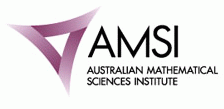Workshop on
Analysis and its Applications
in Honour of
Brailey Sims
Friday 21st — Sunday 23rd August, 2015
Venue: CARMA, The University of Newcastle
 
Speaker: Chris Lennard
Title: Recent developments in fixed point and Banach space theory
I will discuss three different recent results in fixed point and Banach space theory.
Aspects of each were strongly influenced by Brailey's life and career as an extremely fine person,
mathematician, teacher and mentor.
Parts (1), (2) and (3) were all partially inspired by Brailey's wonderful seminar series at Kent
State University in 1986, entitled: ``The Existence Question for Fixed Points of Nonexpansive
Maps." As a new Ph.D. student at KSU, meeting and interacting with Brailey during my first
year was one of the highlights of my Ph.D. studies - and my life, both generally and
mathematically.
Further, my interest in characterizing the fixed point property in $c_0$, which led in part to
Item (3), was initiated by a paper of Enrique Llorens-Fuster and Brailey: ``The fixed point
property in $c_0$", Canadian Mathematical Bulletin 41(4) (1998), 413-422.
C. Lennard and V. Nezir have proven that if a Banach space is a Banach lattice, or has an
unconditional basis, or is a symmetrically normed ideal of operators on an infinite-dimensional
Hilbert space, then it is reflexive if and only if it has an equivalent norm that has the fixed
point property for cascading nonexpansive mappings. This new class of mappings strictly includes
nonexpansive mappings. (Nonlinear Analysis 95 (2014), 414-420.)
More recently, C. Lennard, V. Nezir and L. Piasecki (in preparation) have proven that an arbitrary
Banach space is reflexive if and only if it has an equivalent norm that has the fixed point
property for mappings of cascading nonexpansive type. This second new class of mappings strictly
includes both nonexpansive mappings and cascading nonexpansive mappings.
J. Burns, C. Lennard and J. Sivek have proven the existence of a contractive mapping on a
weakly compact convex set in a Banach space that is fixed point free. This answers a long-standing
open question. (Studia Mathematica 223(3) (2014), 275-283.)
T. Gallagher, C. Lennard and R. Popescu show that there exists a non-weakly compact, closed,
bounded, convex subset $W$ of the Banach space of convergent sequences $(c, \|\cdot\|_{\infty})$,
such that every nonexpansive mapping $T : W \longrightarrow W$ has a fixed point. This answers a
question left open in the 2003 and 2004 papers of Dowling, Lennard and Turett.
This is also the first example of a non-weakly compact, closed, bounded, convex subset $W$ of a
Banach space $X$ isomorphic to $c_0$, for which $W$ has the fixed point property for nonexpansive
mappings. (J. Mathematical Analysis and Applications 431 (2015), 471-481.)
Speaker: Warren Moors
Title: Semitopological groups versus topological groups
A semitopological group (topological group) is a group endowed with a topology for which multiplication is separately continuous (multiplication is jointly continuous and inversion is
continuous). In this talk it will be shown that certain topological properties of a semitopological group automatically imply that it is, in fact, a topological group. In particular, it will
be shown that every Cech-complete semitopological group is a topological group. This proof relies upon the use of topological games. A technique that was first introduced to the speaker by
Brailey Sims back in May of 1990.
Speaker: Aidan Sims
Title: On ultramethods in parenting: life as the first derivative of a smooth operator
Having a top-notch research mathematician as a father is an interesting and, obviously, formative experience. For example, the mathematical puns don't get appreciably better;
but your sense of humour gets steadily worse until, eventually, you think they are hilarious. And that's symptomatic, because I think that what makes an excellent mathematician,
far beyond mathematical ability, is a combination of a deep thirst for knowledge, a wonderfully active imagination, and the sort of ability to squint at a concept from a hundred
different angles that leads inevitably to those awful puns. I'm going to talk a bit about growing up around Dad; about some of the ways in which he passed on that wonderful
imagination and curiosity and squinty-angled way of peering deep into the insides of everything; and about some of the ways I keep seeing his deep influence I myself — and not
just expressed as bad puns.
|